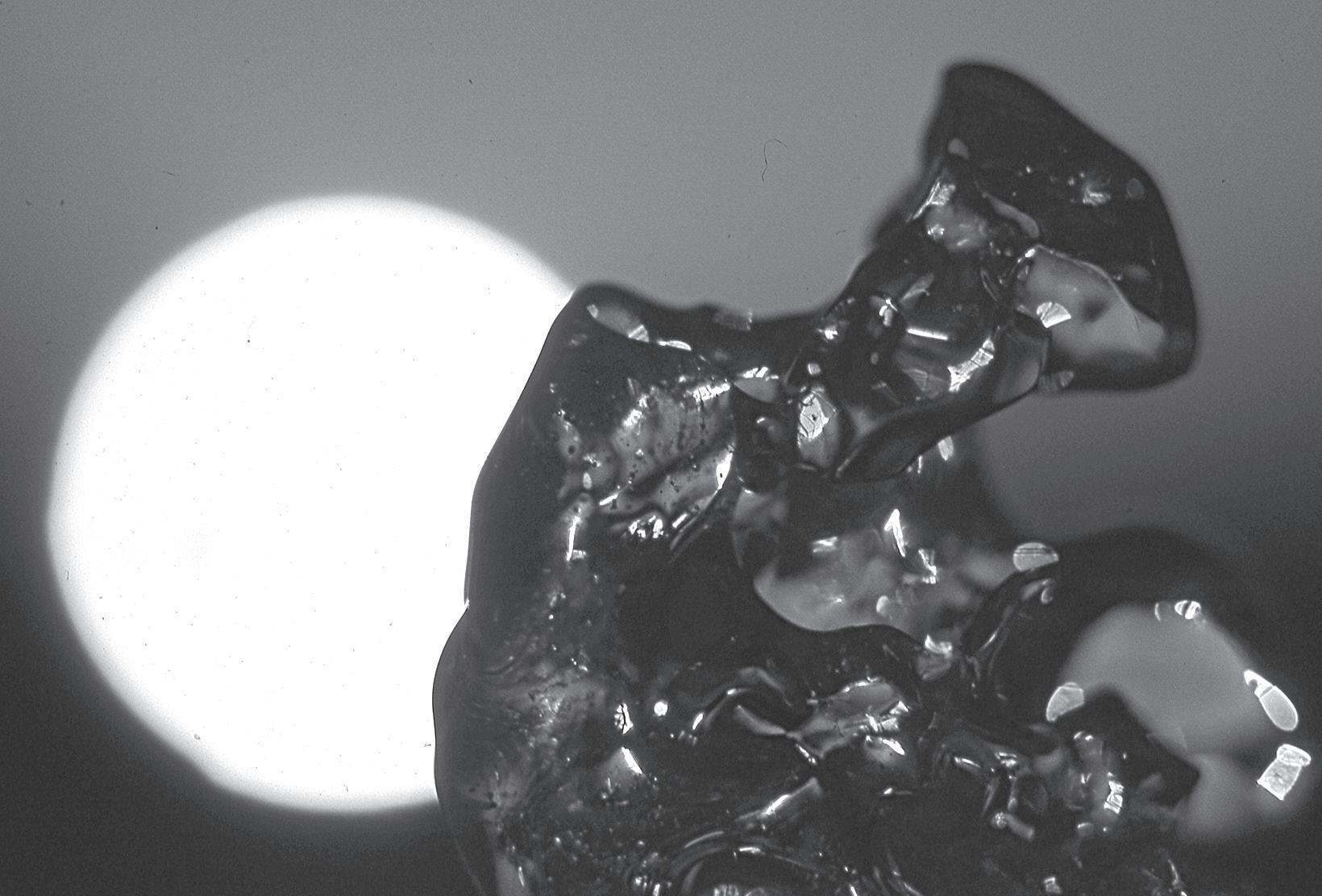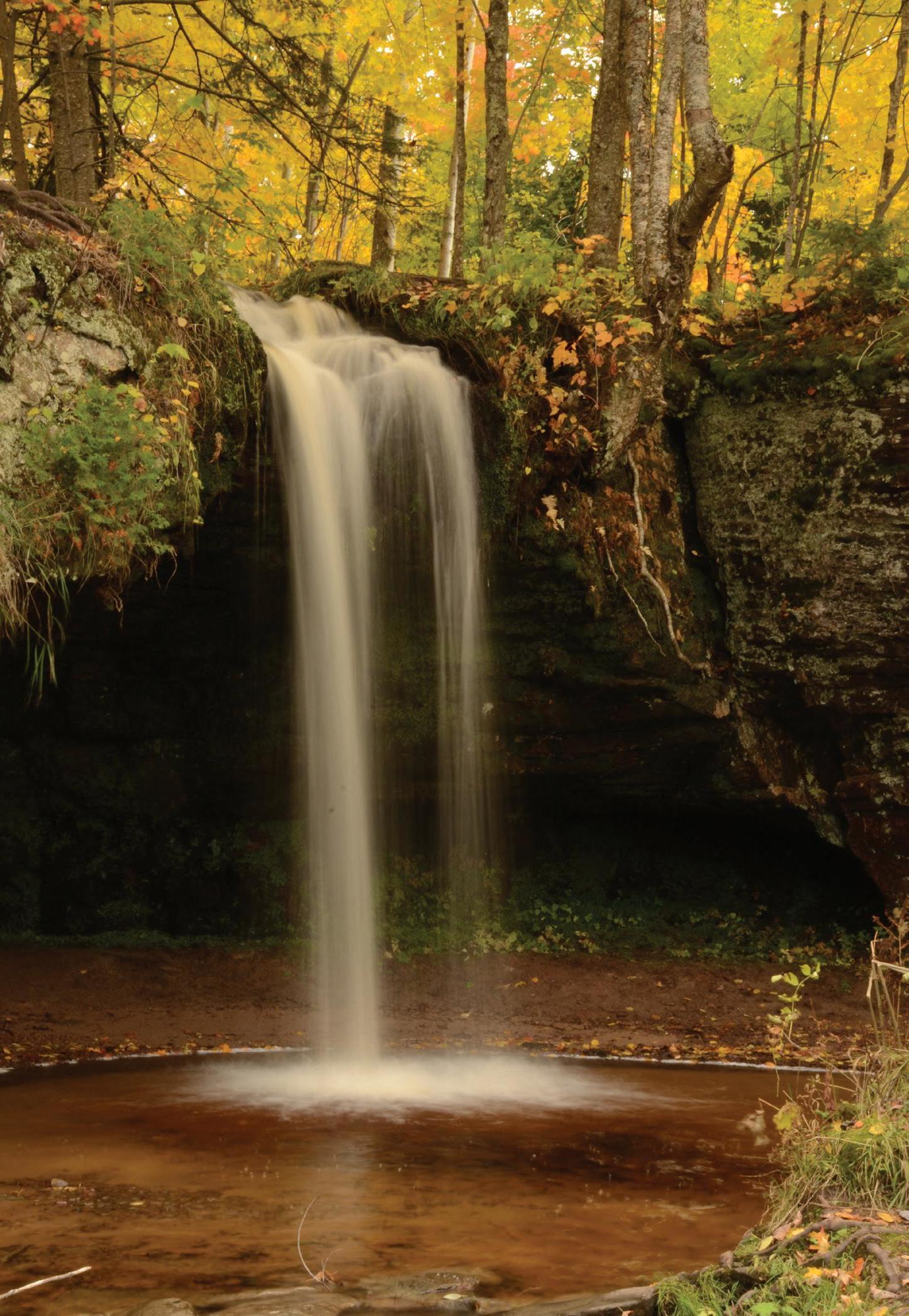
7 minute read
In the Outdoors Scot Stewart
Motorists on M 28 can easily view Scott Falls in Alger County near AuTrain.
times are those when the temperature is changing around that magic temperature, the freezing point. It is then that snow, frost, and ice make their appearances.
Advertisement
Frost is probably the most ephemeral form of water or water crystals. In the Upper Peninsula, the chances of seeing good frost mornings are not great, especially close to the Great Lakes. In the highlands of Marquette, Iron and Baraga Counties it does drop below freezing more often in the spring and fall, providing more mornings to create frost magic.
Frost occurs when ground temperatures drop to 32 degrees(0 Celsius) before the air above does, and moisture in the air condenses and freezes on the surface of leaves, blades of grass and other surfaces. If the cooling process is slow, the crystals of frost will be larger and more spectacular. If the nighttime temperatures drop precipitously, the frost becomes just a dusting.
The trick to frost though, is getting out just at sunrise when the early morning light glistens in the crystals and it is not warm enough yet to melt the frost. Weather watchers check on the nighttime temperatures before bedtime and note the time of the sunrise. Then it is out in the morning to find spots where the temperature has dropped just the right amount and there is no wind.
Sometimes the moments to see the frost are extremely brief, and those out enjoying the show have to move from place to place and find newly exposed frosty places in sunlight. Meadows along the tree line can be some of the best places to start.
Frost can occur in late winter when a stretch of unseasonably warm weather comes along, increasing the humid-
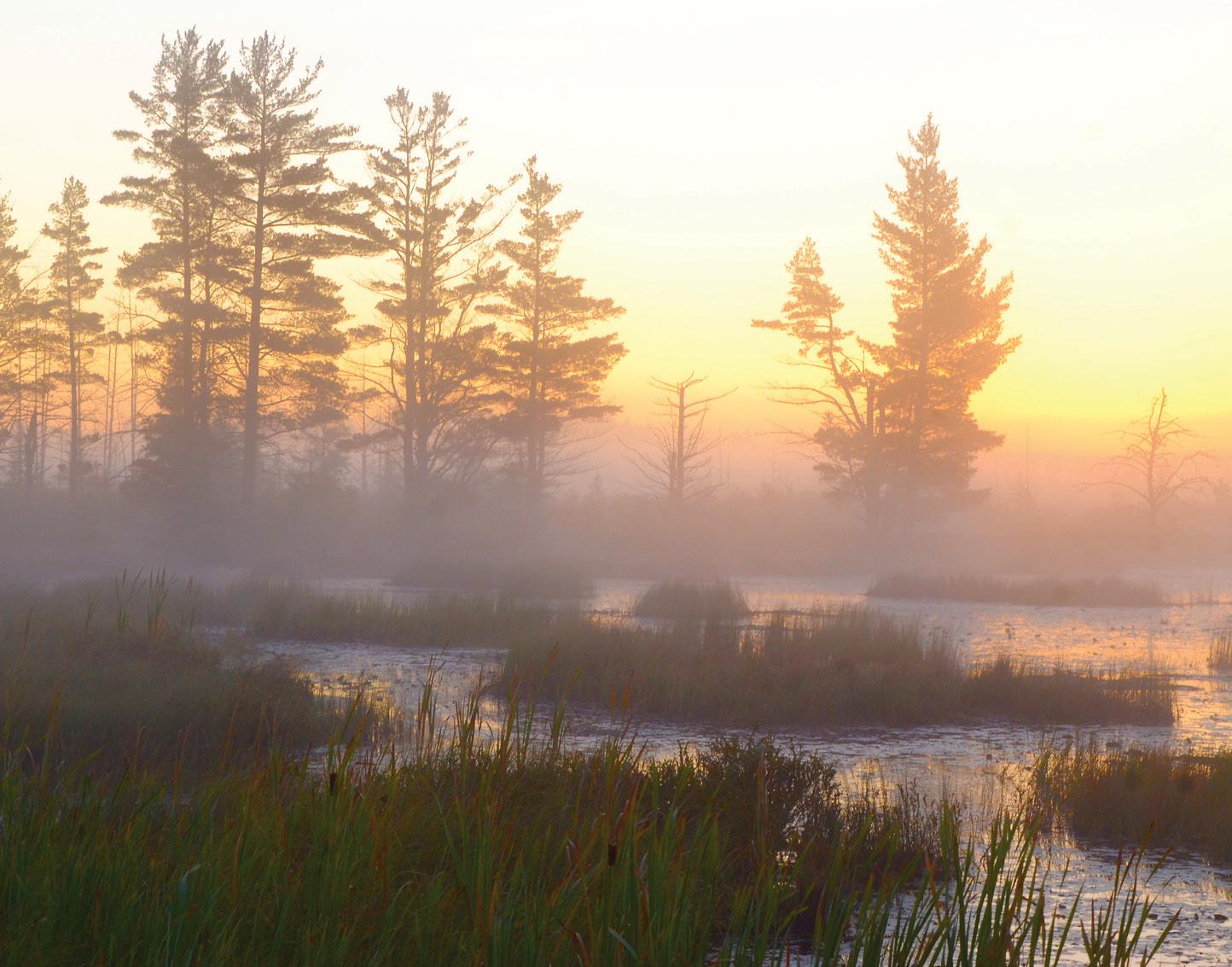
Mist rises above a bog early in the morning in Luce County. A large percentage of the county is considered wetlands.
ity. If the evening temps drop really slowly, a fairyland of crystal-covered branches can ensue. In a small bog in Chippewa County, a January morning turned into such a scene for birders looking for roosting owls. No owls, but great scenes in the bog! And that is what makes water so wonderful. It may not be the target for the hiker, birder, walker, or driver, but it can still be the highlight of the day.
On a warmer night in fall, frost may not occur; there may be just the wetness of dewdrops developing heavily on the tips of grass blades and aster leaves.
A true miracle is the process of guttation, a plant-caused event that looks like dew but is the result of water in the ground, not in the air. As plants draw water up their roots, pressure builds in the plants forcing the water up to the leaf tips. If there is an excess of water, the water continues out of the leaves through small structures called hydrathodes. A tiny row of droplets can appear along the top of leaves and is often most visible on plants like strawberries and clover.
“Once in a lifetime, one escapes the actual confines of the flesh. Once in a lifetime, if one is lucky, one so merges with sunlight and air and running water that whole eons, the eons that mountains and deserts know, might pass within a single afternoon without discomfort. The mind has sunk away
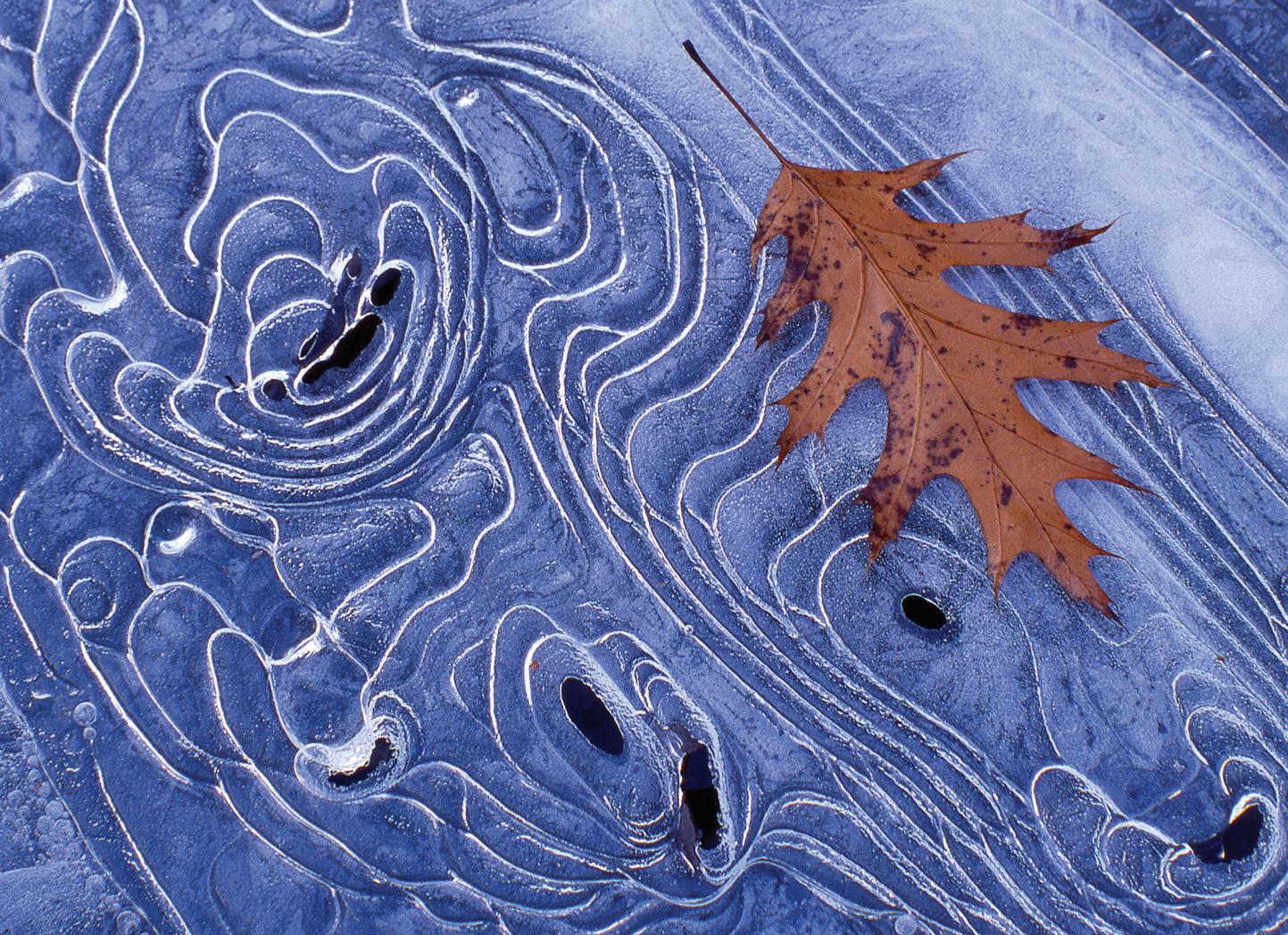
A black oak leaf is stuck to the swirled patterns in the ice atop a frozen pond.
- Loren Eiseley
There is something primeval about walking along a river, stream or even a small rivulet. The gurgle or murmur of running water can drown out the sounds of cars, machinery, and voices and create an other-worldly place. Small delights, like the trill of a winter wren, the drip of a small seep into a creek, or a buzzing cicada can come alive and take the explorer away from the land of man. Waterfalls may be the ultimate escape, as the sounds literally drown out every other sound, and the sight of the falling water mesmerizes just about anyone.
Even single drops of water can become lenses, magnifiers, and minuscule sparkles of sunlight. Whether dew drops or raindrops, small spheres of water on plant and other surfaces create a myriad of sparkles in the early morning light or after a midday storm.
A closer look will reveal the droplets act like magnifying glasses on leaf surfaces, magnifying the veins beneath the droplet. From a side view, viewers may see a reflection of the sun and a reverse view of the landscape behind them. On a warm, humid day, a microscopic invertebrate may take up a short-term life swimming around in the bubble of water.
“ … from the beginning, it was the snowflakes that fascinated me most”.
— Wilson Alwyn Bentley
As temperatures begin to drop in the fall, water is ready to take on plenty of new forms. Upper atmosphere air dropping below water’s freezing point may begin to create crystals of H2O and their weight can put them into freefall. No one knew the nuances of snowflakes better than Wilson “Snowflake” Bentley (See snowflakebentley.com). His book, “Snowflakes in Photographs,” first published in 1931, is an amazing array of more than 2,200 photographs of individual snowflakes, depicted with amazing sharpness for the time, and his equipment was adapted to specifically show the detail in each flake.
For those who wonder if there are two snowflakes alike, this may help to reveal just how intricate snowflake designs are and how difficult it would be to copy all the details of a single flake.
Colder temperatures turn on the ice machines. A walk along a bubbling creek in November before the first snow, when the overnight temps drop into the teens, is sure to create some icicles along the water’s edge where it splashed up on overhanging branches and sticks pushed up along the banks.
Slow freezes can help ice slowly grow inward from a puddle or pond edge and slowly close in toward the middle if it gets cold enough. The concentric rings will tell the story of the nighttime temperatures, with narrow rings formed when the temperatures dropped quickly and wide rings when the temps dropped slowly.
Ice on Lake Superior is a different matter altogether. In milder years, no ice may develop until January or February, and it may extend out only a short way. Thin ice may be at the mercy of storms and big waves, and may be tossed up into volcano-like cones of ice along the shores of bays.
In colder winters, sheet ice may form well out into the lake. Last winter, the ice got to be more than a foot thick in the Lower Harbor of Marquette during a cold, quiet period, forming a great sheet of very smooth ice all the way to the breakwater. Pressure cracks slowly developed, creating some beautiful patterns in the ice, accompanied by bubbles trapped alongside them. With the snow covering them though, some photographers turned to snow shoveling Lake Superior to find the cracks. It was as though the lake was not happy to be so covered, and its groans eventually led to explosive cracks and a breakup.
With the weather and temperature changes coming at unexpected times these days there are no sure ways to know what to expect on a walk to a favorite pond, a busy creek or just through the woods after a storm. There are plenty of discoveries to make looking for the magic of water and all the wondrous effects it can have on body and soul..
About the author: Scot Stewart has lived in Marquette long enough to be considered a true Yooper even though he was born in Illinois. He is a teacher and loves to be outdoors photographing and enjoying nature.
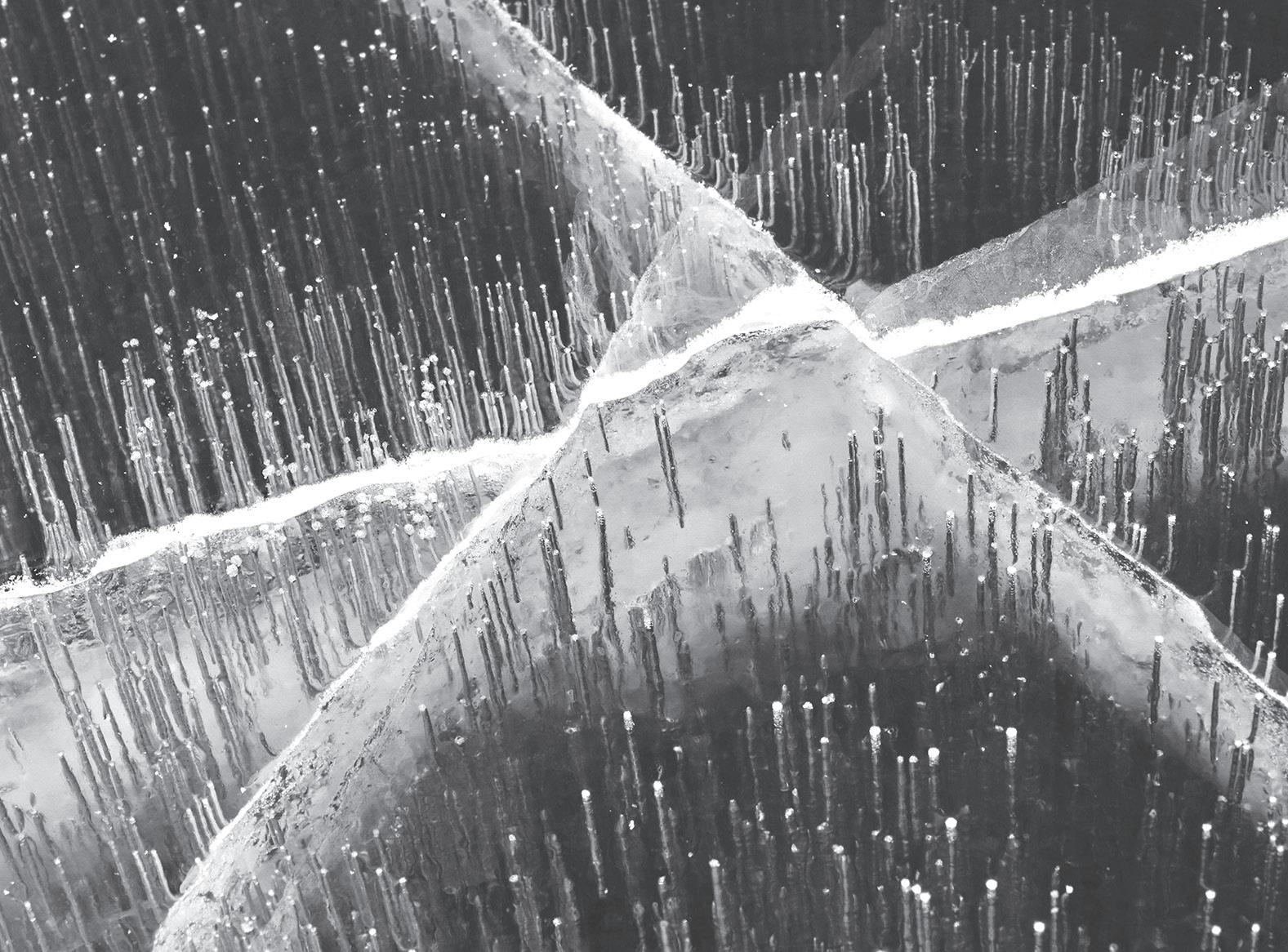
Pictured are numerous paths of frozen bubble trails among the deep cracks on the ice that formed on Marquette’s lower harbor last winter.
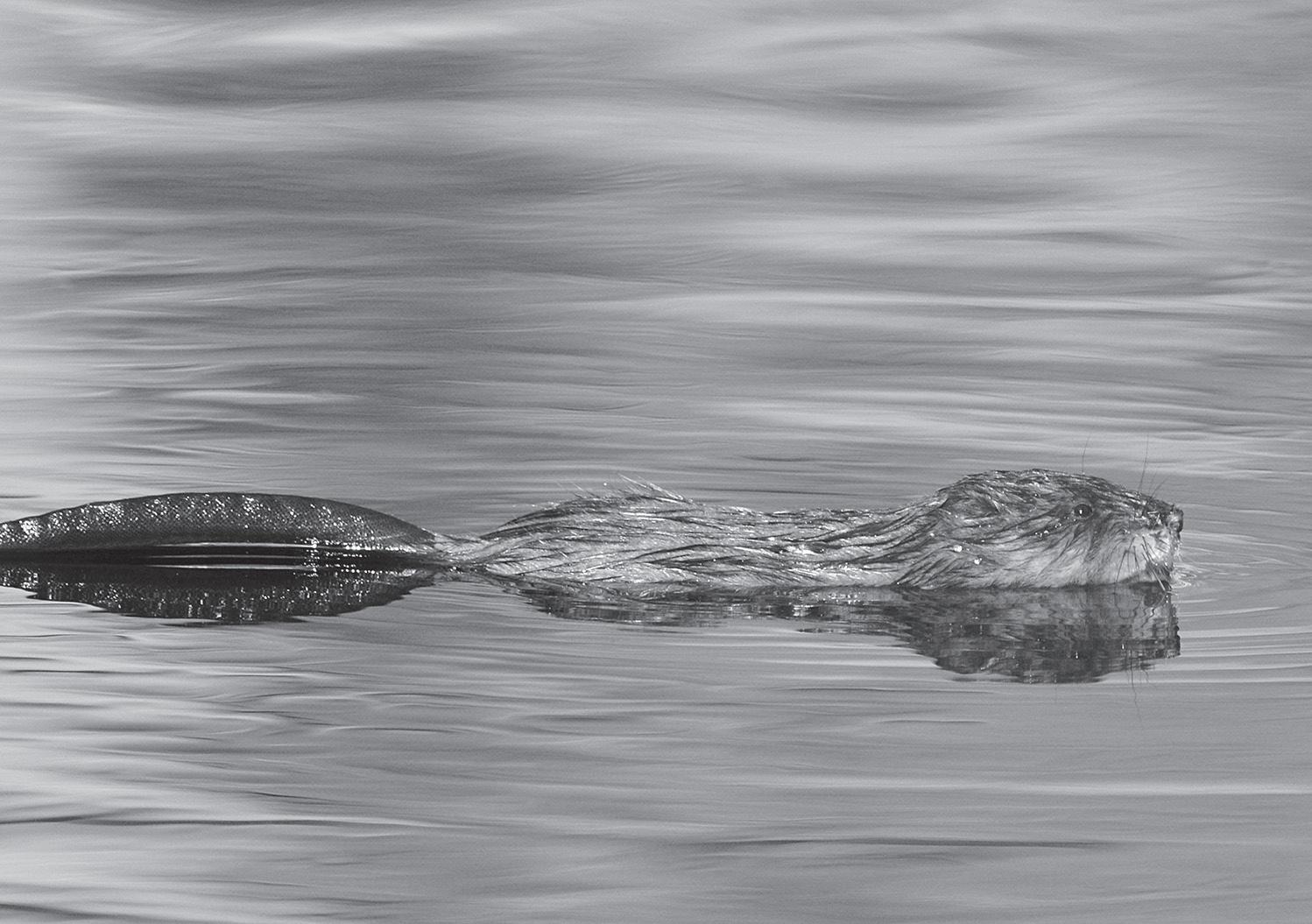
A muskrat swims across a pond at Park Cemetery in Marquette.
As the sun sets, a chunk of Lake Superior ice sparkles and reflects the remains of the day.
